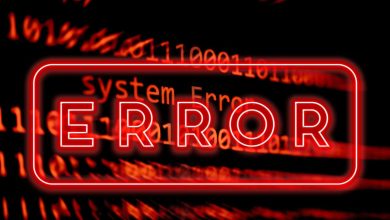Fortunately, several cybersecurity measures can help organizations protect themselves from ransomware attacks. These include a layered approach to security, limiting access, and training employees on cyber security.
A general best practice is to limit access to critical systems and data by implementing the least privilege. Additionally, it is important to back up files and keep them offline, out of reach from hackers.
Table of Contents
Install Anti-Malware Software
Many cybercriminals use ransomware to freeze a victim’s system or data and demand a ransom be paid. These hackers target enterprise networks, servers, and individual laptops and computers to steal sensitive information and assets.
Keeping all programs and operating systems updated with the latest security patches makes it more difficult for attackers to exploit vulnerabilities. Segmenting your network can also make spreading malware between systems and devices more difficult. Attackers are less likely to get access to crucial systems and data when least-privilege access is implemented based on identification and context.
Install Anti-Theft Software
Cybercriminals can steal and encrypt data, preventing users from accessing files or programs. They then demand a ransom to decrypt the files.
Most cybersecurity experts like Fortinet recommend the best way to protect against ransomware settlements is to apply the principle of least privilege (PoLP). Identity and access management tools allow administrators to grant minimal system access based on who needs it and the risk to their environment. Also, ensuring that security patches are deployed regularly mitigates the ransomware threat. This includes patching the Remote Desktop Protocol to prevent ransomware from gaining entry into an organization’s network.
Install a Firewall
Using firewalls to block unauthorized traffic from entering your network can help limit the impact of a ransomware attack. In addition, implementing network segmentation can limit the attack to specific subsystems and give your security team more time to respond.
Applying the principle of least privilege can help reduce ransomware attacks by ensuring that users have the bare minimum access to systems and data required to do their jobs. In addition, implementing identity and access management (IAM) controls that filter web and email content can also prevent malware attacks.
Install Anti-Spyware Software
Utilizing an Internet security solution with frequent updates is the best approach to fend off ransomware. Software upgrades include security patches to help thwart threats like ransomware and enhance general performance.
Typically, phishing assaults are how ransomware enters a network. Unaware staff members may be tricked into opening manipulated files that contain harmful macros that give hackers access to the device.
Only downloading software and media files from trusted sources should be taught to employees. This will lessen the possibility of an infected computer via a USB stick or other storage device.
Install Antivirus Software
Ransomware is malware that locks up files and demands a fee for their decryption. This attack can threaten to expose confidential information, halt business processes or take entire networks offline.
To prevent malware infections, educate employees on warning signs and best practices. Employers should also implement email filtering that denies macros, blocks phishing attacks and authenticates inbound email with technologies. Back up all important data regularly to lessen the impact of an infection.
Install Anti-Phishing Software
A phishing effort generally precedes a ransomware assault. Use effective spam filters to stop phishing messages from reaching staff as a defense against this. Use other technologies to authenticate incoming emails, such as Sender Policy Framework (SPF) and Domain Message Authentication Reporting and Conformance (DMARC).
Use allow listing software to prevent unwanted applications and websites from running on your network. This lessens the possibility that a worker will unintentionally download a malicious program or go to a compromised website. Finally, educate staff members on cyber security. This will lessen the possibility of a ransomware assault.
Install Anti-Spam Software
Keeping antivirus software up-to-date can help prevent ransomware attacks by scanning for and blocking malicious code. It’s also important to use multi-factor authentication for remote or administrative interfaces and ensure they are completely separate from your primary network environment.
Using the least privilege principle to restrict access to files and programs can help lower the chance of being victimized by ransomware. Identity and access management controls can automatically detect suspicious activities like changing file extensions or attempts at privilege escalation. You must always use a VPN to protect your data when utilizing public Wi-Fi.
Install Backup Software
An effective backup system can lessen the damage a ransomware assault causes. This is crucial for small businesses since they often lack the resources to pay a ransom.
It’s also important to take cybersecurity measures that prevent ransomware infections in the first place. For example, implementing the principle of least privilege can reduce vulnerability by only granting access to files and programs to those who need it. This can reduce the number of potential infection vectors, including phishing attacks. In addition, it’s critical to test and update these security measures regularly.
Install Anti-Spyware Software
A malicious software attack known as ransomware locks down computers or encrypts files to extort money from its victims. To sabotage operations, attackers can look for crucial data such as PII/PHI and trade secrets.
Ransom attacks can be difficult to predict and prevent, but it’s possible to protect against the threat by installing security tools and following best practices. For example, implementing DMARC and segmenting your network can help prevent ransomware attacks by blocking unauthorized emails from accessing your systems.
Please explore our site for more exciting content if you like this article.




